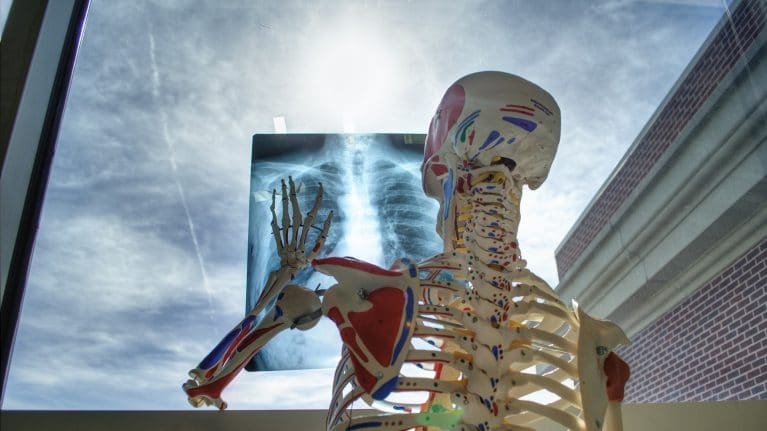33 LGBT Statistics for the Community and Its Allies in 2024

LGBTQ+ stands for lesbian, gay, bisexual, transgender, queer (or sometimes questioning), and others. Behind the letters stands a history of immense struggle entwined with the joy of self-acceptance and life full of authenticity. Although the community has gained more acceptance and support over the years, LGBT statistics show that most people remain closeted in fear of discrimination.
In this article, we’ll discuss the latest statistics and facts, along with the struggles and accomplishments of this continually growing, diverse community. So, without further ado, let’s dive right in!
Top 10 LGBT Statistics for 2022
- 28.4% of queer-spectrum students think about dropping out of college.
- When applying for jobs, 20% of LGBTQ+ people in the US experience discrimination.
- One in ten LGBTQ+ Americans are married to a same-sex partner.
- One in ten LGBTQ+ people reported that a healthcare provider refused to see them.
- Currently, 29 countries and jurisdictions allow gay and lesbian marriages.
- LGBTQ+ parents are raising 4% of all adopted children throughout the continental US.
- 40% of LGBTQ+ youth have considered suicide in the previous year.
- Around six out of ten Americans support same-sex marriages.
- 53% of LGBTQ+ people have heard lesbian or gay jokes at work.
- Over 50% of LGBTQ+ Americans hide a personal relationship to avoid discrimination.
LGBT Education Statistics
Below we’ll discuss some of the challenges that LGBTQ+ youth face while receiving an education. As shown by existing research, these students endure many difficulties in high school that impact their college enrollment and experiences.
1. Nearly 17% of US college students identified as lesbian, gay, queer, bisexual, asexual, or questioning.
(PNPI)
The Association of American Universities gathered these LGBT statistics in 2018 from a sample of over 180,000 undergraduate and graduate students. In that survey, 1.7% of the students identified as nonbinary, questioning, or trans.
2. Almost 10% of LGBTQ+ students who face frequent verbal harassment claimed that they don’t have plans to go to college.
(PNPI)
When it comes to LGBT discrimination in schools, statistics from 2019 indicated that two out of three LGBTQ+ college students had experienced sexual harassment at least once. Furthermore, these students are more likely to experience stalking and intimate partner violence than heterosexual students.
3. 28.4% of queer-spectrum students think about dropping out of college.
(Purdue University)
According to data on the dropout rate for LGBTQ students, over 28% of queer-spectrum students consider dropping out compared to 16.5% of heterosexual students. Moreover, 37.8% of trans-spectrum students consider dropping out of college compared to only 17.9% of non-transgender/cisgender students.
4. Stats on LGBTQ graduation rates imply that 17% of LGBTQ+ people aged 25 and older have a bachelor’s degree.
(PNPI)
Moreover, 13% of self-identified members of the community aged 25 or older have a graduate degree. Additionally, queer men were twice as likely to get a bachelor’s degree than queer women in 2015.
LGBT Employment Statistics
The following section will include some LGBT employment discrimination statistics and the types of harassment that many endure in the workplace. Have things gotten better or worse? Please keep reading to find out.
[visualizer id=”99816″]
Source: Center for American Progress
5. 81 countries forbid sexual orientation discrimination in the workplace.
(Catalyst)
Unfortunately, LGBT facts note that most countries still don’t provide legal protections for LGBTQ+ workers. However, in September of 2018, India’s Supreme Court nullified section 377 of the penal code that penalized consensual same-sex relations.
6. 96% of Fortune 500 companies have non-discrimination policies, including sexual orientation.
(Catalyst)
According to LGBT workplace discrimination statistics, 94% of the companies have non-discrimination policies that include gender identity. Moreover, 71% provide transgender-inclusive benefits, and 57% offer domestic partner benefits.
Therefore, LGBT work statistics reveal that Fortune 500 companies are making considerable advancements in providing benefits to their employees who are part of the LGBTQ+community.
7. Over 5 million LGBTQ+ employees have likely been affected by the pandemic.
(Catalyst)
Many LGBTQ+ people work in industries significantly impacted by the pandemic — namely, the 2 million working in restaurant and food services and the million employed by hospitals.
Moreover, 30% had reduced working hours during the pandemic, and LGBT unemployment statistics confirm that 12% became unemployed.
8. When applying for jobs, 20% of LGBTQ+ members in the US experienced discrimination.
(Catalyst)
However, the experience varies by race and ethnicity. For instance, LGBT discrimination in the workplace statistics affirms it happens to 32% of LGBTQ+ people of color, compared to 13% of Caucasians.
Furthermore, based on LGBT income statistics, 22% of LGBTQ+ people in the US haven’t been promoted at the same rate or paid equally as their heterosexual peers.
9. 53% of LGBTQ+ people have heard lesbian or gay jokes at work.
(Catalyst)
LGBTQ+ people are commonly exposed to inappropriate and offensive jokes at their expense. For example, LGBT in the workplace statistics suggest that 37% have heard bisexual jokes, and 41% — transgender jokes.
At the same time, transgender employees face harassment in the form of being deliberately referred to by incorrect pronouns, bathroom accessibility, and inappropriate questions.
10. LGBT statistics verify that around 46% of US employees are closeted at work.
(Catalyst)
About 59% of them consider discussing sexual orientation or gender identity in the workplace “unprofessional.” Furthermore, about 17% are exhausted from hiding their sexual orientation, and somewhere around 13% feel tired of hiding their gender identity.
Unfortunately, 10% of LGBTQ+ employees have left a job because they didn’t feel accepted by their colleagues.
Gay Marriage Facts and Statistics
Below, we’ll look into how gay marriage has changed over the years, its supporters, and those who oppose it. We’ll also discuss some statistics on the gay marriage divorce rate and how it compares with heterosexual couples.
[visualizer id=”99814″]
Source: Statista
11. Around six in ten (61%) people in the US support same-sex marriages.
(Pew Research Center)
These statistics on gay marriages from 2019 indicate that the number of supporters increased from 37% (2009) to 62% (2017). So, we can see that same-sex marriages are gaining more and more support.
12. 79% of non-religious people in the US support same-sex marriage.
(Pew Research Center)
As far as the religiously affiliated go, 61% of Catholics and 66% of white mainline Protestants are supportive. However, that’s not the case for white evangelical Protestants, as only 29% of them support same-sex marriages.
13. Gay marriage supporters statistics indicate that 74% of Millennials support gay marriages.
(Pew Research Center)
Only 45% of the Silent Generation (1928–1945) feel the same. We can also see a considerable political divide, as gay marriage support statistics emphasize that 75% of Democrats support these marriages, compared to only 44% of Republicans.
14. 14.7% of the 1.1 million same-sex couples in the US had at least one child under 18 in 2019.
(United States Census Bureau)
Moreover, same-sex couples tend to have smaller families. For example, LGBT parenting statistics from 2020 showed that in 2019, 54.7% of same-sex couples had only one child, compared to 39.2% of opposite-sex couples.
15. One in ten (10.2%) LGBTQ+ Americans are married to a same-sex partner.
(Pew Research Center)
The US Supreme Court granted same-sex couples the constitutional right to marry on June 26th, 2015. Consequently, gay marriage statistics revealed 61% of same-sex couples already living together got married as of 2017, compared to only 38% before the ruling.
16. 29 countries and jurisdictions allow same-sex marriages.
(Pew Research Center)
Statistics about gay marriage find that the first nation to legalize these marriages was the Netherlands in 2000. Since then, they’ve been allowed in a few other European countries, like, Spain, France, Ireland, and most recently — Austria, and Germany.
Outside of Europe, gay and lesbian marriages are now legal in the US, South Africa, Argentina, Canada, Brazil, Australia, Uruguay, Colombia, and Ecuador. Additionally, in 2019, Taiwan became the first Asian country to allow these marriages.
17. Same-sex couples are four times more likely to adopt children or stepchildren than opposite-sex couples.
(United States Census Bureau)
In 2019, 43.3% of children of same-sex couples were adopted or were stepchildren, as per gay marriage adoption statistics. In addition, according to the American Community Survey from 2019, same-sex parents were more likely to be female.
18. LGBT marriage statistics from 2019 indicated 58% of same-sex couple households were married.
(NBC News)
The number of married gay and lesbian households has risen by nearly 70% since 2014, one year before the legalization of same-sex marriages in the US. Based on the Census Bureau’s American Community Survey, this percentage amounts to 568,110 couples.
19. Same-sex married couples had a median income of $107,210 in 2019.
(NBC News)
Gay marriage vs. straight marriage statistics showed this to be higher than opposite-sex married couples ($96,932). In addition, male couples ($123,646) earned more than female couples ($87,690).
20. In the Netherlands, 30% of lesbian marriages failed, compared to only 15% of gay marriages.
(Lee O. Tyler)
Due to Holland’s longstanding LGBTQ+ laws, the statistic above is from data gathered between 2005 and 2015. Gay marriage divorce statistics from 2019 noted that in the UK, of the 900 same-sex couples who divorced by the end of 2018, nearly 75% were lesbian.
21. LGBTQ+ parents are raising 4% of all adopted children in the continental US.
(Adoption Choices Of Oklahoma)
Gay marriage adoption statistics indicate that gay and lesbian adoptive parents represent almost 17% of single parents raising children. In addition, there’s a higher rate of adoption among same-sex individuals and partners compared to opposite-sex couples.
LGBT Housing Statistics
Due to the consistently high rates of discrimination toward the LGBTQ+ community regarding housing access, it’s not surprising that they experience higher levels of housing instability and homelessness than non-queer people. Let’s check out the facts below.
22. Housing providers quoted gay men’s average yearly rent costs $272 higher than that of heterosexual men.
(Opportunity Starts at Home)
According to LGBT housing discrimination statistics from 2017, housing providers also told gay men and transgender people about fewer available properties.
Unfortunately, although there are many documented cases of discrimination against LGBTQ+ people concerning housing purchases and rentals, the majority of states offer no protective measures to combat these injustices.
23. 70% of transgender homeless people have experienced some form of mistreatment in the shelter they stayed in.
(Williams Institute)
LGBT homelessness statistics from the US Transgender Survey cite mistreatment involving harassment, assault, and eviction (based solely on being transgender). Sadly, 26% of those surveyed avoided going to a shelter for fear of being mistreated.
24. Homeless LGBT youth statistics reveal a 120% higher likelihood of homelessness when compared to non-LGBTQ+ young people.
(True Colors United)
Around 7% of the youth in the US are LGBTQ+. However, LGBT youth homelessness statistics report 40% of homeless youth are members of the community. The primary reason behind their homelessness is family conflict, which is mainly over their sexual orientation or gender identity.
LGBT Health Statistics
LGBTQ+ people face considerable mental and physical health challenges resulting from social stigma, violence, and discrimination. As a result, they often don’t receive the care and support that a patient deserves. The following LGBT healthcare statistics will likely astonish you.
25. Nearly one in ten LGBTQ+ people reported that a healthcare professional refused to see them.
(Explore Health) (CDC)
More specifically, LGBT health inequalities stats from 2017 revealed that healthcare professionals refused to see them due to their actual or perceived sexual orientation. Furthermore, almost three in ten transgender people reported that a provider wouldn’t see them due to their gender identity.
Fortunately, the Centers for Disease Control and Prevention recognizes that there are LGBT health disparities, and the CDC is working with partners to improve the health and lives of LGBTQ+ youth.
26. Almost 25% of LGBTQ+ survey respondents couldn’t access their HIV providers during the COVID-19 crisis.
(HHR)
We saw even more LGBTQ health disparities in 2020 during the pandemic, especially when non-COVID-19-related healthcare was deprioritized or even completely unavailable. For example, LGBT health care statistics indicated that 20% couldn’t refill their HIV medications, and only 17% could reach their HIV providers via telemedicine.
27. LGBT mental health statistics revealed that 40% of LGBTQ+ youth have considered suicide in the previous year.
(Sage USA)
The number is over 50% for transgender and nonbinary youth. Moreover, 48% of LGBTQ+ youth engaged in self-harm in the last 12 months, and 68% reported symptoms of generalized anxiety disorder in the previous 14 days.
LGBT Facts on Discrimination Against the Community
Every day, LGBTQ+ people are assaulted, harassed, victimized, and even killed for who they are. So even though the community continues to grow and the public is made more aware of their struggles, are things actually getting better? Continue reading to find out.
[visualizer id=”99812″]
28. Two-thirds of LGBTQ+ youth respondents report there is someone trying to change their gender identity or sexual orientation.
(Statista)
As we can see from these LGBT discrimination statistics, while massive efforts have been made for social and legal acceptance, discrimination doesn’t stop, particularly against LGBTQ+ youth. LGBTQ+ teens aged 13–17 struggle the most due to the pressure directed at their identity.
Statistics on homophobia show that around 71% of these young people report feeling sad for at least 14 days in the past year. It’s important to talk with a professional when feeling stressed or depressed for an extended period. Fortunately, many online therapy sites can help by allowing you to discuss what you are going through.
29. In 2019, 36% of people aged 18–34 were “very” or “somewhat” uncomfortable learning a family member is LGBTQ+.
(GLAAD).
Approximately 34% felt uncomfortable learning that their doctor was LGBTQ+. Furthermore, 39% didn’t like learning their child had a lesson on LGBTQ+ history at school. According to homophobia in America statistics, all of these percentages were higher than those recorded the previous year.
30. Over one in three LGBTQ+ people experienced discrimination in the US last year.
(Center for American Progress)
This National Public Opinion study from 2020 found that many LGBTQ+ people reported being discriminated against in their personal, public, and work lives. Furthermore, Black homophobia statistics indicate that 65% of Black LGBTQ+ people feel that discrimination significantly impacts their physical well-being.
31. Over 50% of LGBTQ+Americans hide a personal relationship to avoid discrimination.
(Center for American Progress)
One-fifth to one-third have admitted to altering specific aspects of their personal or work lives to avoid prejudice. Moreover, discrimination against LGBT statistics found that approximately 15% of LGBTQ+ people in the US postpone or avoid medical treatment out of fear of discrimination.
32. Around 17% of transgender high school students left or changed schools because of severe mistreatment.
(Verywell Health)
According to transphobia statistics from the 2015 National Transgender Discrimination Survey, 50% of students that identified as transgender before graduating high school had been verbally attacked. Moreover, around 25% had been physically attacked, and 13% had been sexually assaulted.
33. 47% of transgender people reported a history of sexual assault.
(Verywell Health)
Unfortunately, this abuse is often followed by more mistreatment. For instance, homophobia statistics uncovered that the police mistreated 58% of transgender people who came to them for help. This mistreatment ranged from repeated misgendering to sexual assault.
Conclusion
The LGBTQ+ community is slowly gaining more and more support. But, unfortunately, as we’ve seen in statistics on LGBT discrimination, the community’s struggle for equal rights continues.
Notably, the younger generation seems to be more tolerant and accepting of one’s race, ethnicity, sexuality, and gender identity. So, let’s hope that future LGBT statistics will show that the discrimination and struggles decrease and possibly even disappear over time.
Last but not least, we urge you to check out CDC’s list of LGBTQ+ resources for LGBTQ+ youth, their friends, and supporters. To our delight, older adults are getting much-needed attention, too. Check out The National Resource Center on LGBT Aging, the country’s leading technical assistance resource center designed to enhance the quality of support and services offered to LGBT older adults.
FAQs
What health disparities are found in the LGBT population?
LGBTQ+ people are more than twice as likely to report depression diagnosis, poor health, and delayed healthcare services. Moreover, LGBT health disparities statistics reveal that transgender people are nearly three times more likely to get poor healthcare quality and face unfair treatment.
What is the safest country for LGBTQ+?
We will give you the top five countries from a recent study based on research about the safest places for LGBTQ+ people to travel and live. The study considered discrimination protections, same-sex marriage rights, workers protections, and a few other factors.
The top five are Norway, Portugal, Belgium, the United Kingdom, and Finland.
Are LGBT underrepresented in medicine?
Although the Association of American Medical Colleges does not consider LGBTQ+ applicants as underrepresented in medicine, many still feel that they are.
Fortunately, Northwestern University’s Feinberg School of Medicine has a broader definition of the term, including students from underrepresented racial and ethnic groups with religious, gender, and sexual identities. Including gatherings, talks, and events catered to LGBTQ+ students.
How large is the LGBTQ community?
According to LGBT statistics from a 2020 Gallup survey, there’s a record number of US adults identifying as LGBTQ—18 million, translating to around 5.6% of the adult population. The results mark over a 1% point jump compared to the previous poll, from 2017 to about 4.5%.






